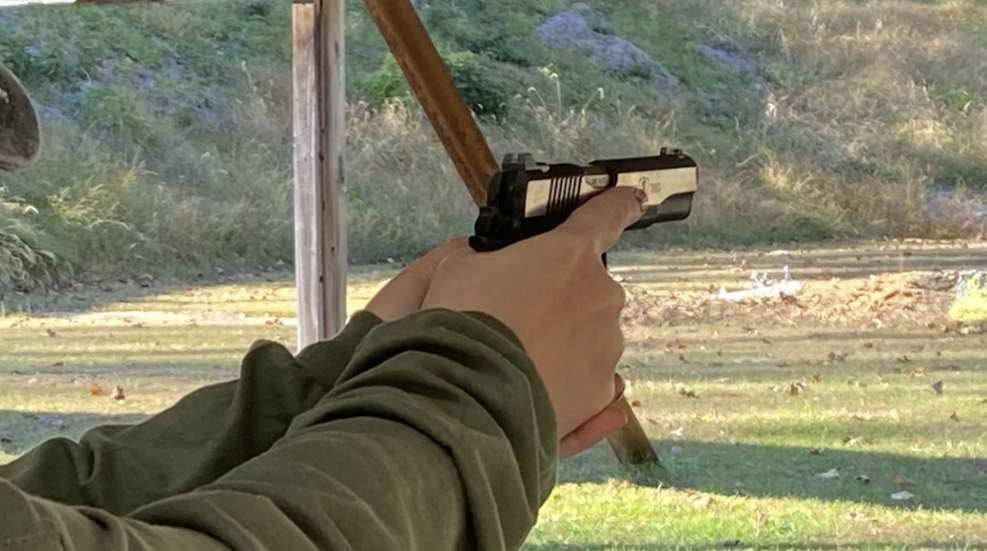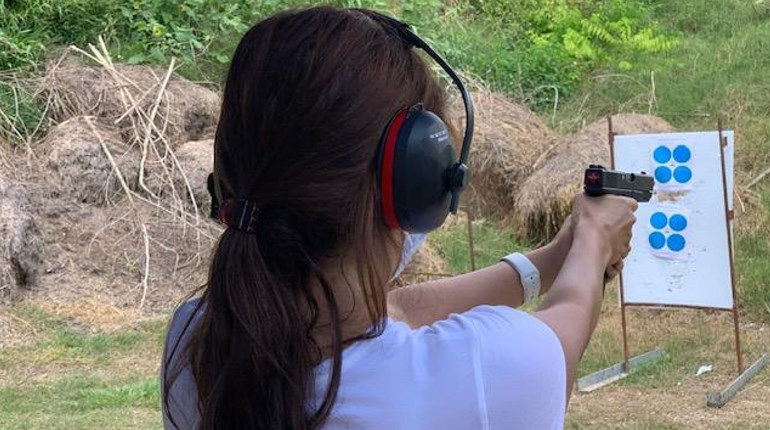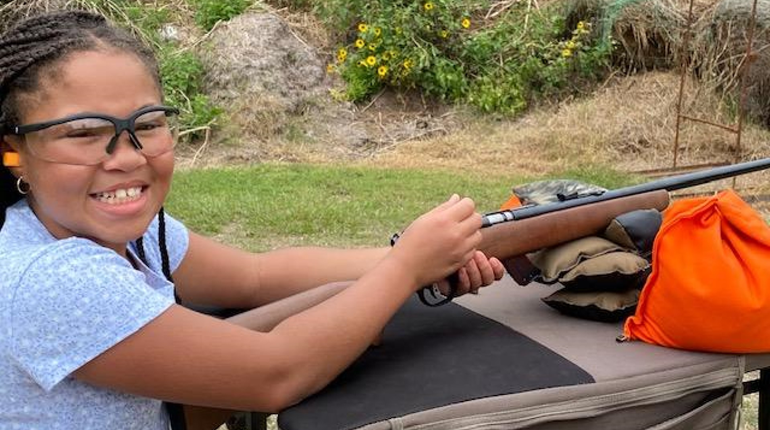
Most gun ranges are safe and have established Standard Operating Procedures (SOPs) to ensure a fun and accident-free experience. Accidents at a gun range are rare, but they do occur. This is usually because a range rule was broken, or the shooter makes one of the 5 common mistakes at the gun range. These mistakes include failing to know what to do when a “Cease Fire!” or “Stop!” is called; uncasing mistakes; firing line mistakes; ready area or line mistakes; and improper clothing mistakes.
1. Cease Fire (Stop) Mistakes
What do you do if you hear “Cease Fire!” or “Stop!” called out on the firing line? Not knowing what to do is one of the most common mistakes that individuals make when shooting on a gun range. Not only do many shooters at the range not know what to do, many non-NRA-certified Range Safety Officers (RSOs) do not know what his or her customers, the shooters, are supposed to do.
Many shooters think that when they hear the command “Cease Fire!” or “Stop!” that you stop shooting, unload your firearm, clear their chamber, lock the slide to the rear or open the cylinder, and place the gun on the shooting table or in the gun rack. Additionally, many non-NRA RSOs expect their shooters to perform the mentioned steps when they call a “Cease Fire!” or “Stop!” on the range.
If the RSO on the range wants their shooters to perform the steps—stop shooting, unload their firearm, clear their chamber, lock the slide to the rear or open their cylinder, and place the gun on the table or in the gun rack, this should have been made clear to the shooters in a “range safety briefing” before they are even permitted on the firing line. This would fall under “additional range rules” that are established by that gun range, in their SOPs.
The correct actions that each shooter should do when the command “Cease Fire!” or “Stop” is called is to stop what you are doing and freeze. Take your finger off the trigger and index your trigger finger along the side of the firearm outside of the trigger guard. Nothing else. The shooters should freeze and wait for further instructions given by the RSO. This is because the shooters do not know why the “Cease Fire!” or “Stop!” command was called. For example, an individual could appear down range and someone could have an accidental discharge while trying to clear their firearm. This is why it is important for everyone, RSOs and non-RSOs, to sign up for the NRA’s Range Safety Officer Course for further understanding of overseeing safety procedures on the range.
2. Uncasing Mistakes
Uncasing mistakes usually involve sweeping someone with the muzzle of your firearm. This may occur at the check-in counter of a range, if an employee asks to see the firearm. It may also occur on the range. Sweeping someone with the muzzle of their firearm is usually an accident. For example, a shooter at the check-in counter or range opens their gun case and the firearm inside is pointed at an employee or a customer in the store, or someone next to them on the firing line.
This is a very easy problem to avoid. A simple solution would be to place a piece of tape on one end of your gun case and mark with an arrow or write “muzzle” on it. When you case your firearm always place the muzzle toward the end of the case that you marked. This way you always know the direction your muzzle is pointing.
This not only helps at the check-in counter or on the firing line, it helps in identifying the position of your muzzle when you are walking to or from the parking lot. For example, if you are walking to the building other customers are ahead of you or behind you, you could carry the gun case so that the muzzle is pointed in the safest direction.
3. Firing Line Mistakes
The most serious firing line mistakes involve picking up fallen items while the line is still hot and people are shooting. It is not uncommon to see an individual shooting at the range who accidentally drops a magazine or a live round and steps forward or bends over to retrieve the item while the range is hot. Many times, the individual retrieving the item exposes a part of their body in front of the firing line. Most often it is the individual’s head!

The only time that dropped items should be retrieved is when the firing line is cold, and permission is given from the RSO to move forward the firing line. If you are shooting a qualification course such as an NRA Firearms Training Course, your state’s concealed or open carry course, or any other course where you are moving different distances, it is not uncommon for the individual calling the course to announce, “Range is cold, you may now retrieve your magazines!”
Bending over and retrieving items when the range is hot can lead to serious bodily injury or death. When a shooter does this, it is usually a reflex of just picking something up that you have dropped. This is why it is extremely important to keep your mind focused and avoid distractions while you are shooting.

4. Ready Area or Line Mistakes
The ready area or line is located behind the firing line. In this area, there are usually tables to set your gun case, range bag, and anything else you are carrying. This means that the shooters on the firing line are between you and the target area. Ready line mistakes are common because many individuals take the name of the area too literally. It would only make sense that on the ready line, it means that you get ready to shoot.
On the ready line, you should get your hearing and eye protection on and anything else needed before getting on the firing line. This could be applying sun protection, lotion or insect repellent. The ready line or ready area is also where any range briefings take place.
The most common mistake that takes place in the ready area or line is the handling of firearms and ammunition. The only time that firearms and ammunition should be handled is on the firing line. It is not uncommon for individuals in this area to be seen uncasing and handling firearms, loading firearms, and loading magazines. Handling firearms in the ready area or line is very dangerous and should be always avoided. This mistake is also one that can get you ejected from the gun range, or even banned from some clubs. Once again, this is why it is advisable for everyone who works at a gun range take an NRA Range Safety Course!

5. Improper Clothing Mistakes
Just like any sport, when shooting, proper attire should be worn. Proper attire includes a hat, shooting glasses, hearing protection, high and tight-fitting collar around the neck, long sleeve shirts, long pants, and closed-toe shoes. Wearing improper attire at the gun range can lead to injuries and accidents.
Hot brass down the shirt, exposed feet, or bare arms can induce the “Hot Brass Dance.” Even though it sounds funny, the hot brass dance can lead to serious bodily injury or death. Someone who is jumping around with a loaded gun because they are being burned by hot brass traveling down their torso is a very dangerous situation. Strict dress codes should be enforced at all gun ranges and in all firearms training classes.
A day at the range is supposed to be fun. Avoiding these common mistakes can make a difference between a fun day at the range or a trip to the hospital, or worse. It is important that all shooters take the appropriate NRA Firearms Training Courses to ensure they are properly educated in the safe and proper use of firearms.














































